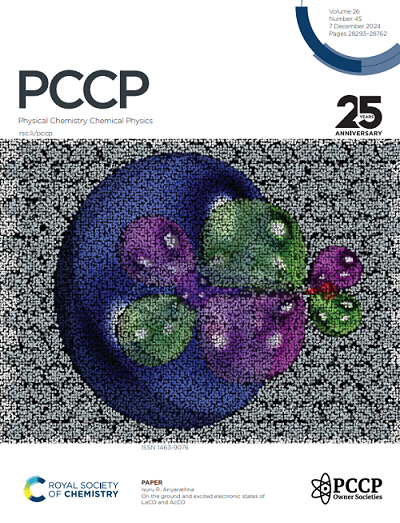Quantifying lattice vibrational modes and optical conductivity in mixed magnetite-maghemite nanoparticles
IF 2.9
3区 化学
Q3 CHEMISTRY, PHYSICAL
引用次数: 0
Abstract
Magnetite nanoparticles are an important nanomaterial with promising biomedical applications that depend crucially on their stoichiometry. Their tendency to oxidize and turn into isostructural maghemite means that discriminating between both oxides is a essential task that is difficult to achieve with conventional techniques. In this work, a novel methodology based on infrared spectroscopy is developed and tested with practically relevant magnetic nanoparticles. In contrast to Raman spectroscopy, which is prone to systematic errors and only offers a qualitative understanding of the vibrational properties, infrared spectroscopy is not only able to identify all the modes corresponding to magnetite and maghemite, but also capable of discriminating between two possible structural variants of maghemite. Additionally, the proposed approach also allows the acquisition of electrical conductivity, a property that is sensitive to the structure and stoichiometry of the particles. Together, vibrational mode modeling and conductivity quantification provide a detailed picture of the structure and properties of mixed iron oxide nanoparticles that is valuable towards an advanced characterization of magnetic nanomaterials in real biomedical applications.求助全文
约1分钟内获得全文
求助全文
来源期刊

Physical Chemistry Chemical Physics
化学-物理:原子、分子和化学物理
CiteScore
5.50
自引率
9.10%
发文量
2675
审稿时长
2.0 months
期刊介绍:
Physical Chemistry Chemical Physics (PCCP) is an international journal co-owned by 19 physical chemistry and physics societies from around the world. This journal publishes original, cutting-edge research in physical chemistry, chemical physics and biophysical chemistry. To be suitable for publication in PCCP, articles must include significant innovation and/or insight into physical chemistry; this is the most important criterion that reviewers and Editors will judge against when evaluating submissions.
The journal has a broad scope and welcomes contributions spanning experiment, theory, computation and data science. Topical coverage includes spectroscopy, dynamics, kinetics, statistical mechanics, thermodynamics, electrochemistry, catalysis, surface science, quantum mechanics, quantum computing and machine learning. Interdisciplinary research areas such as polymers and soft matter, materials, nanoscience, energy, surfaces/interfaces, and biophysical chemistry are welcomed if they demonstrate significant innovation and/or insight into physical chemistry. Joined experimental/theoretical studies are particularly appreciated when complementary and based on up-to-date approaches.
 求助内容:
求助内容: 应助结果提醒方式:
应助结果提醒方式:


